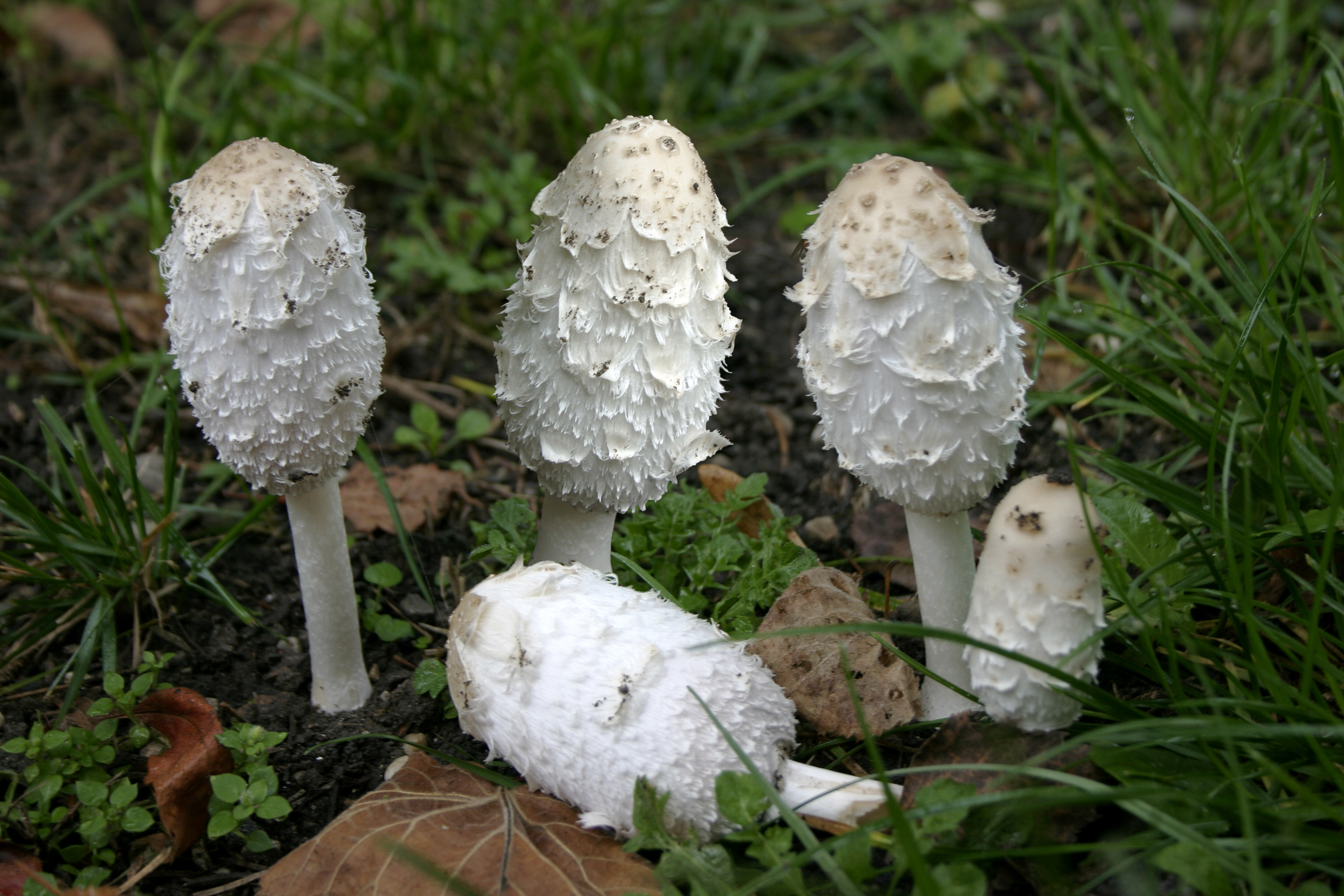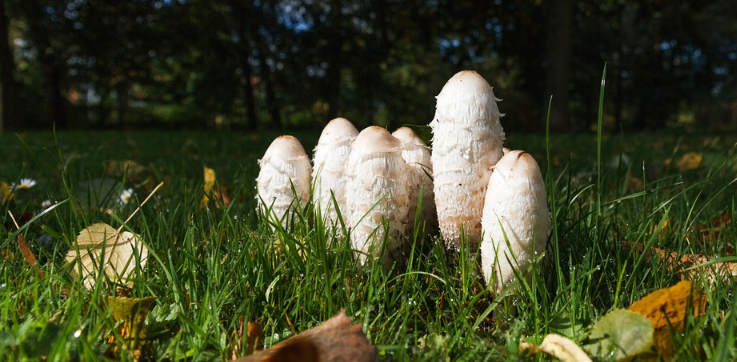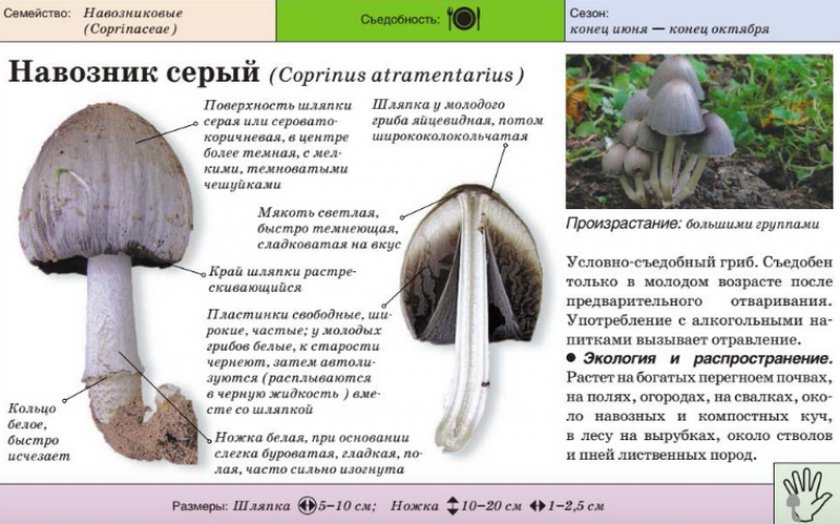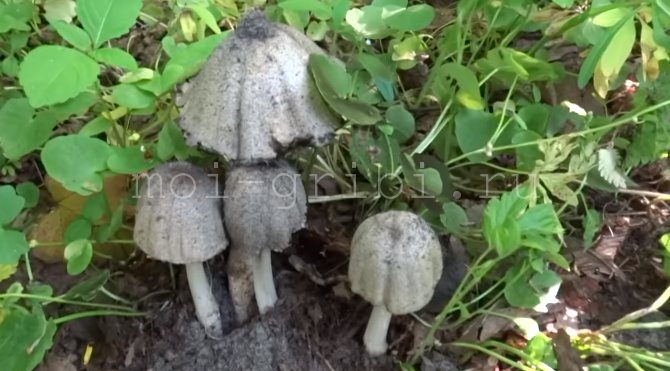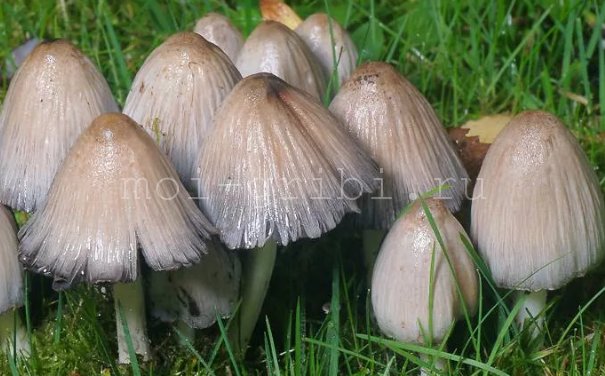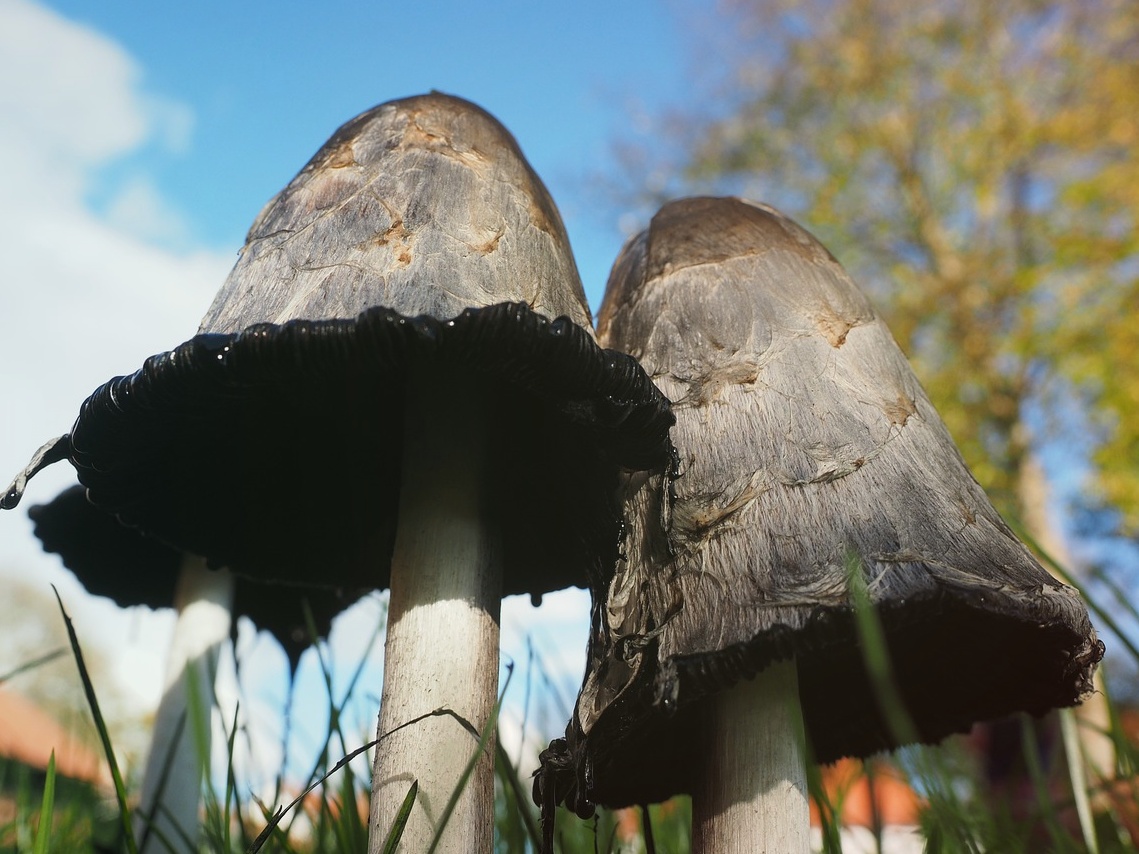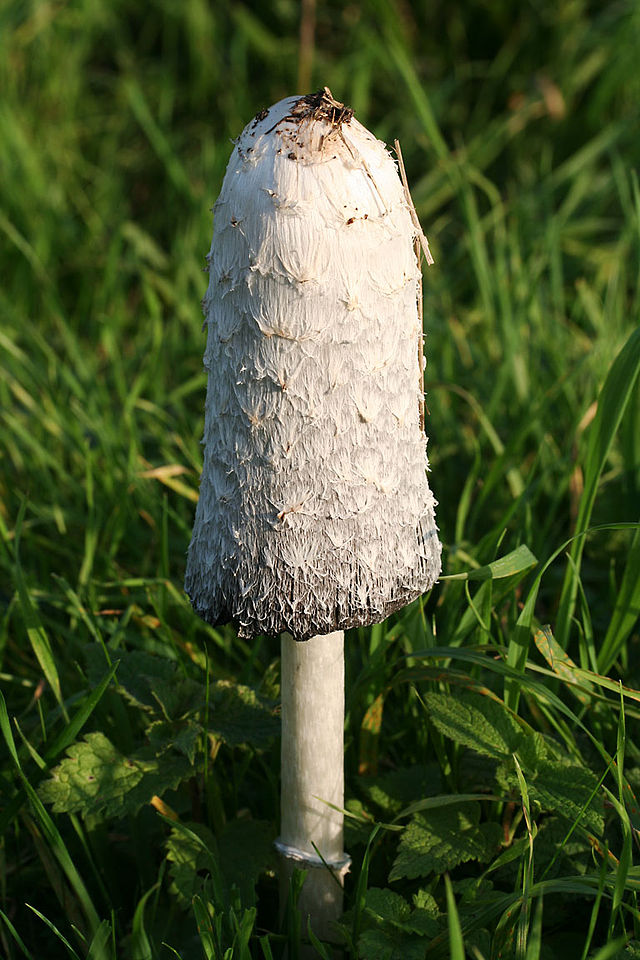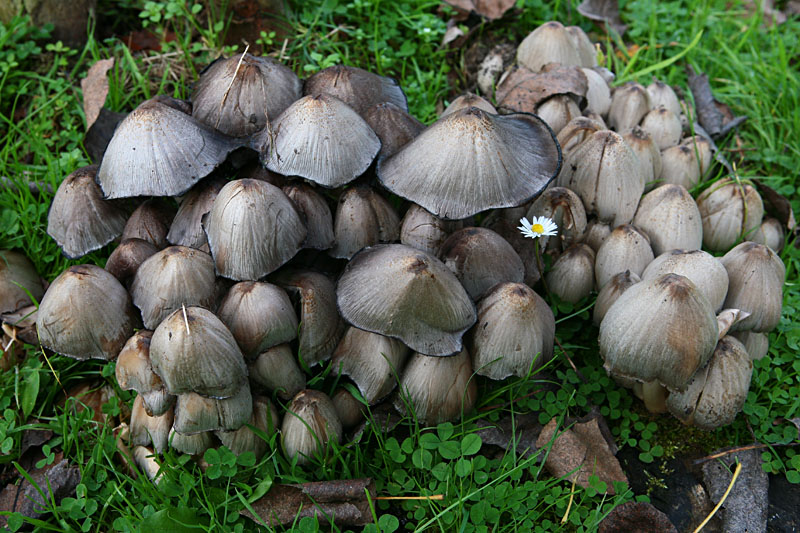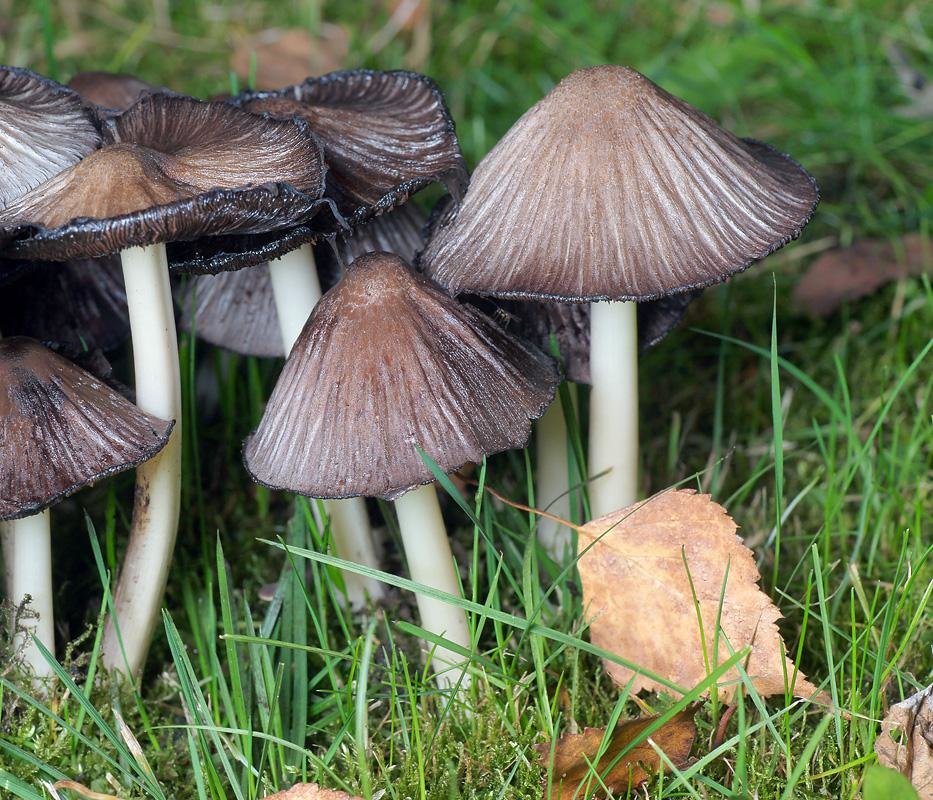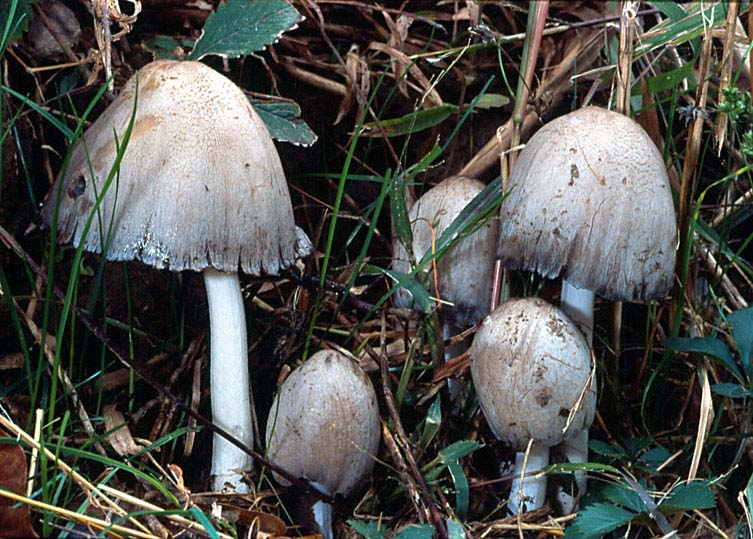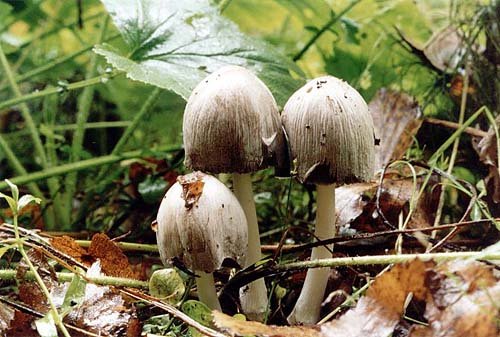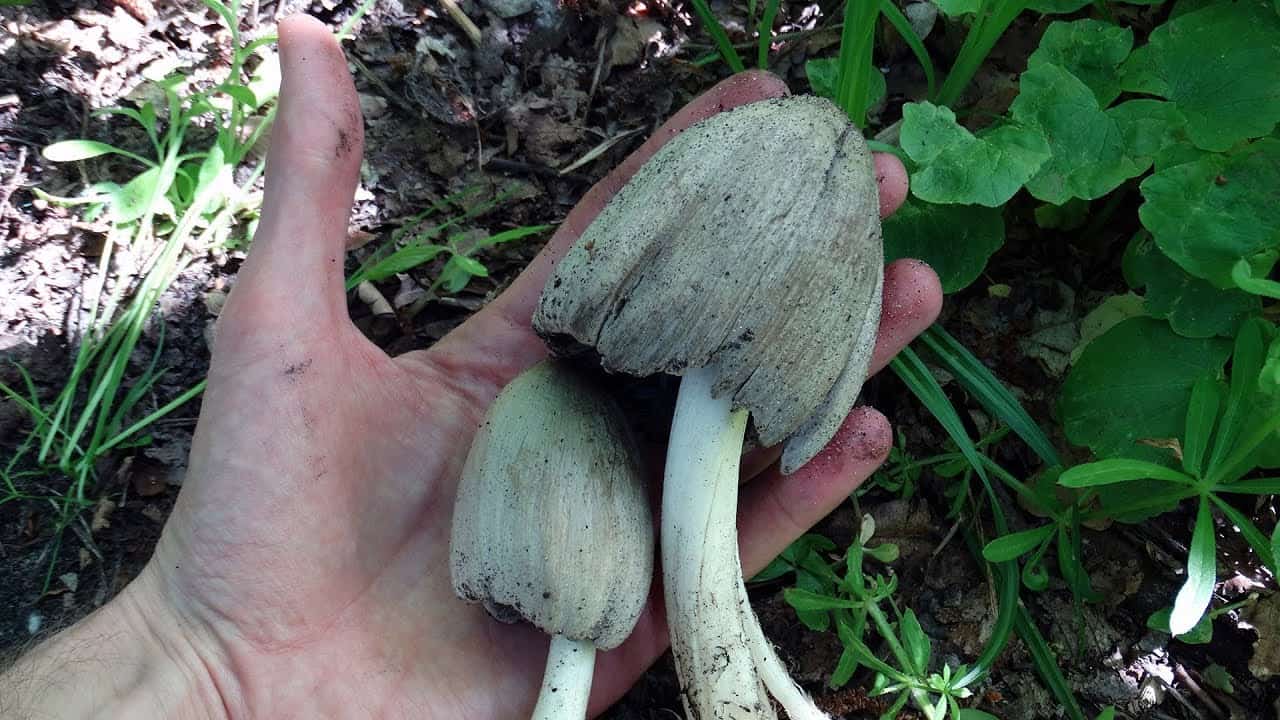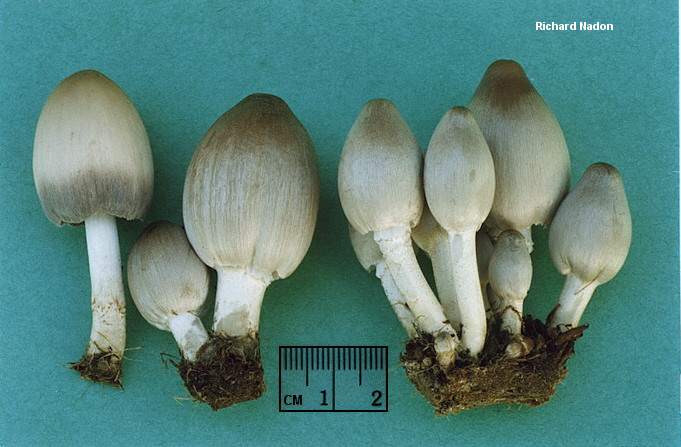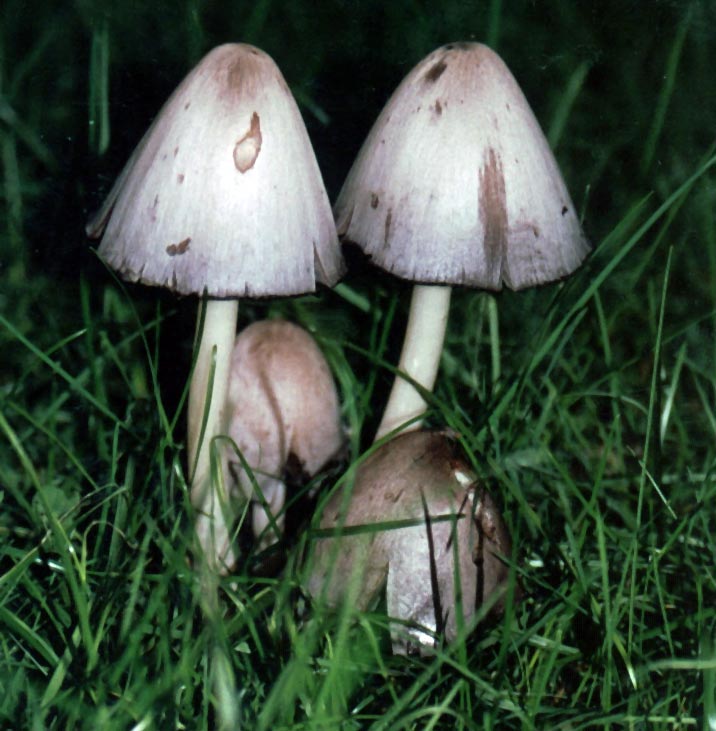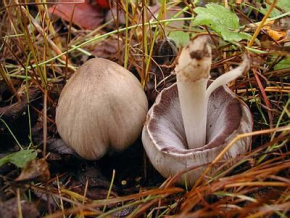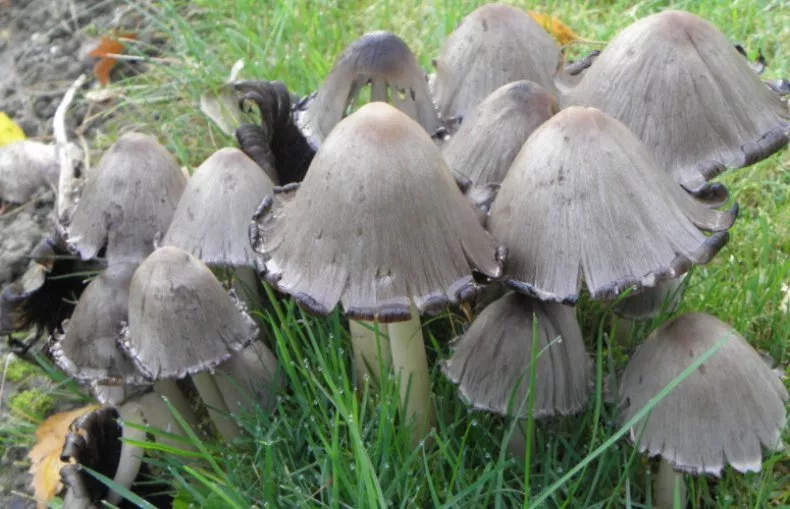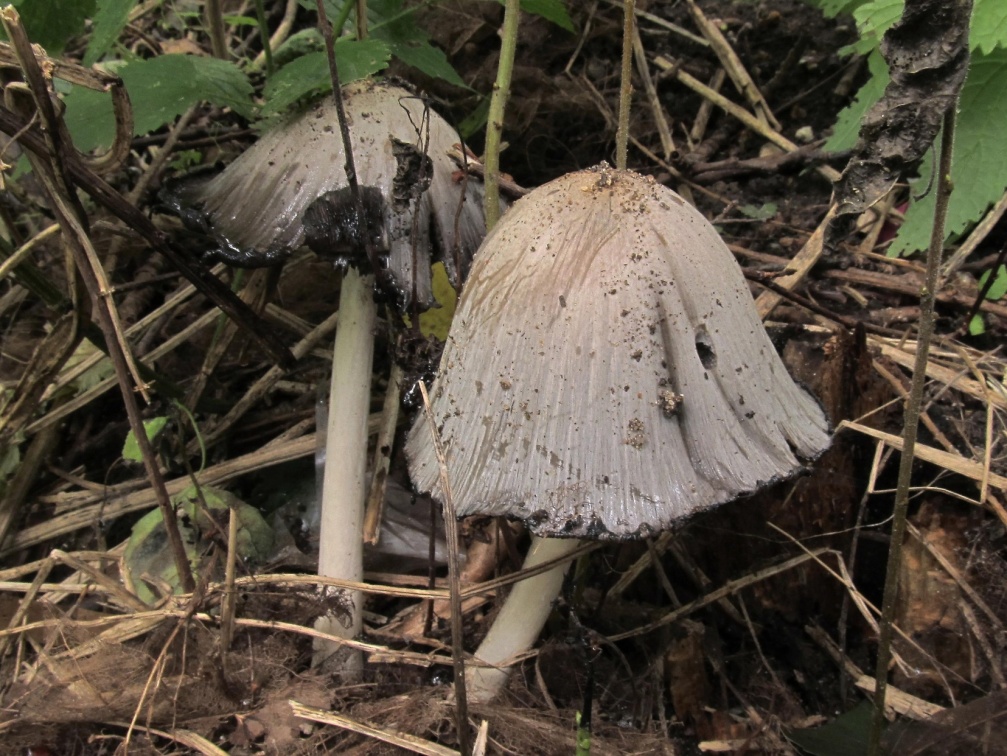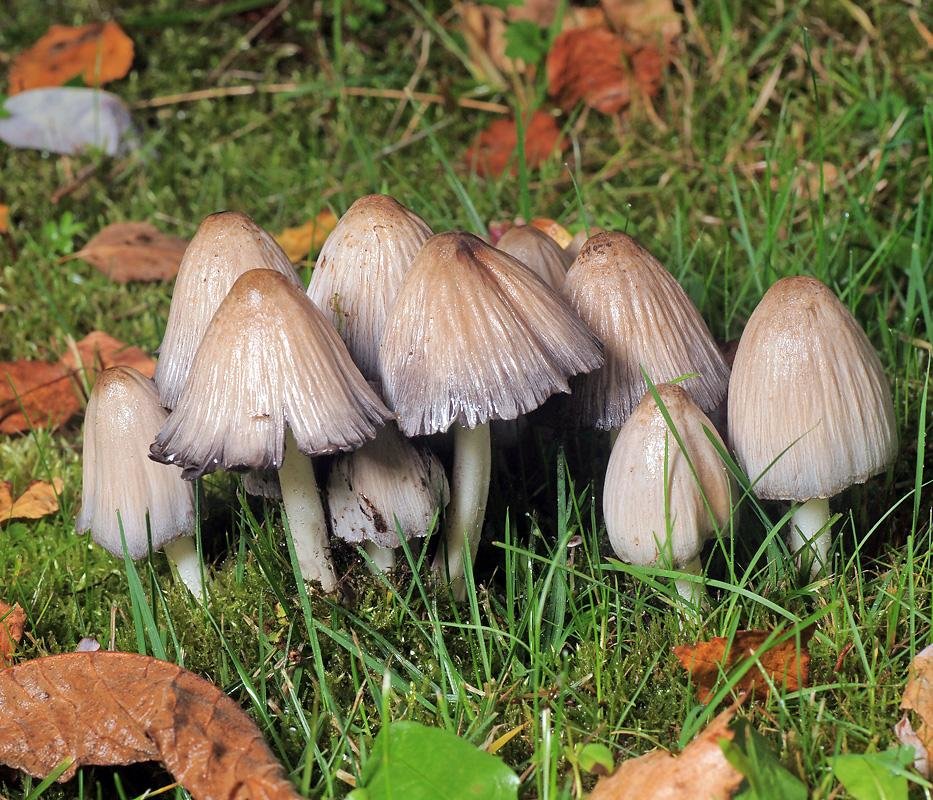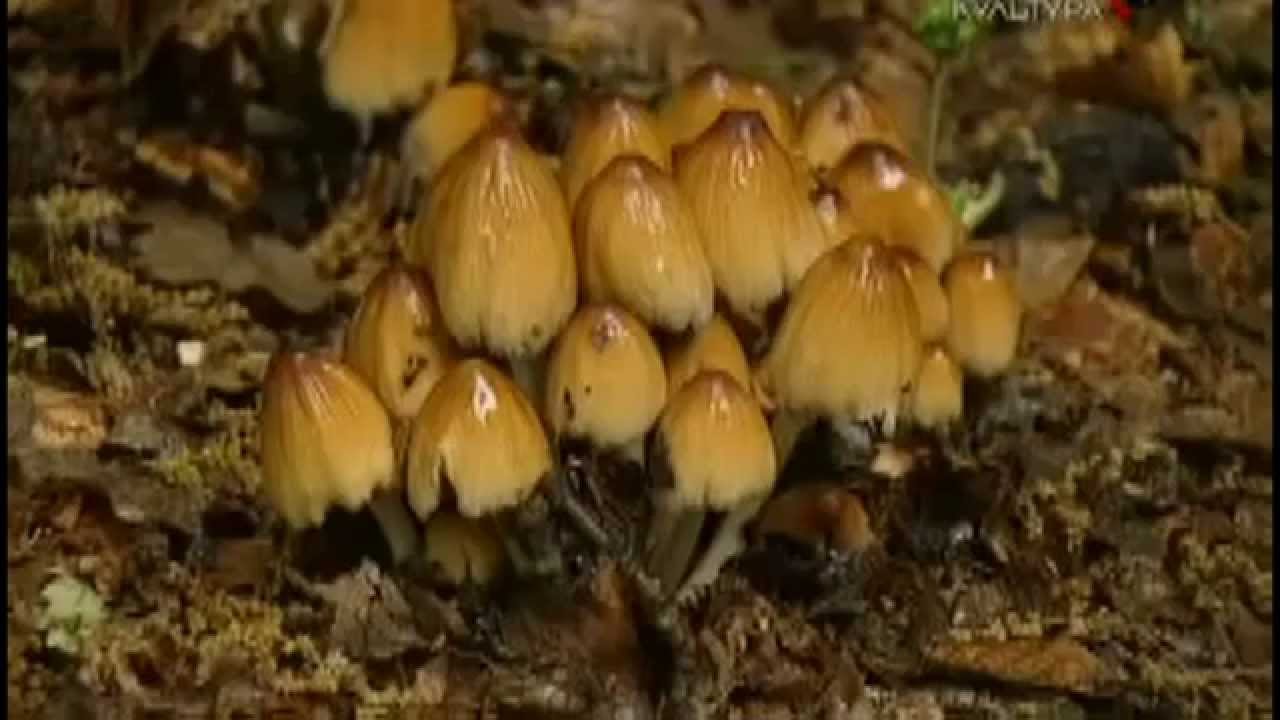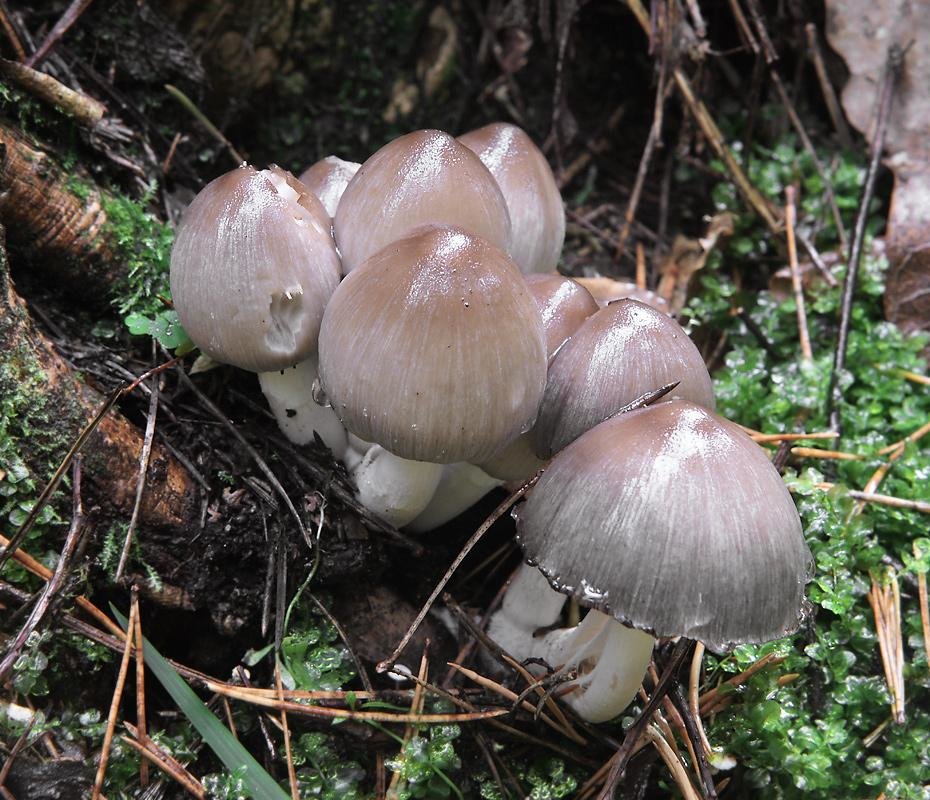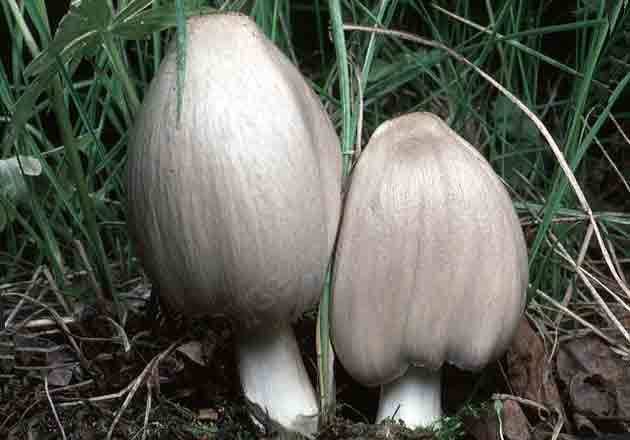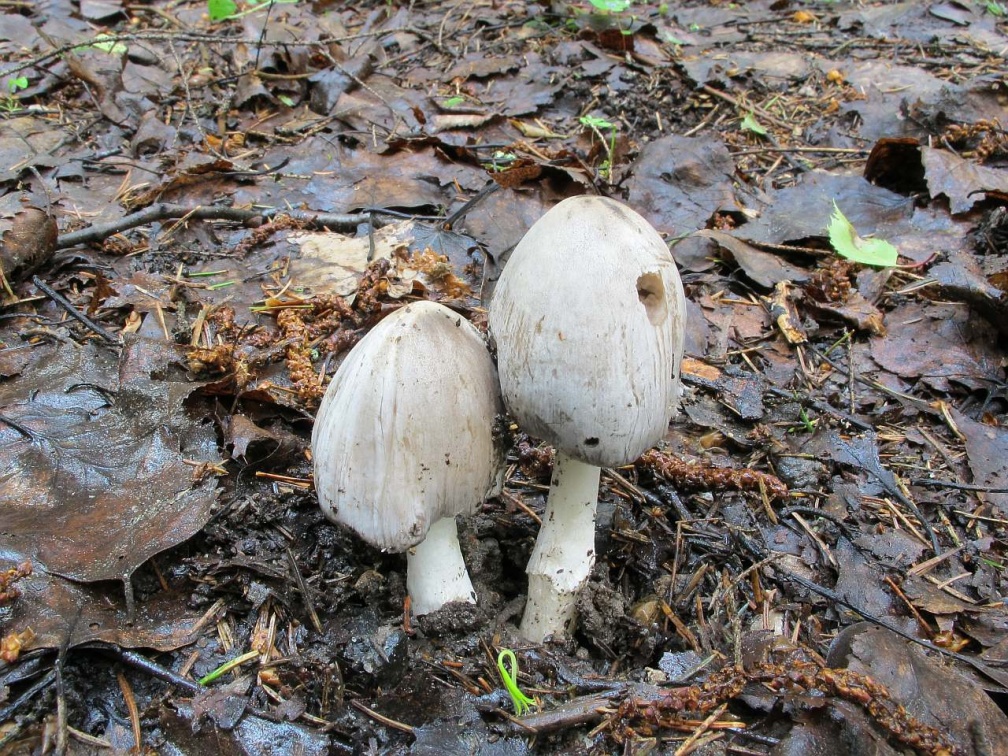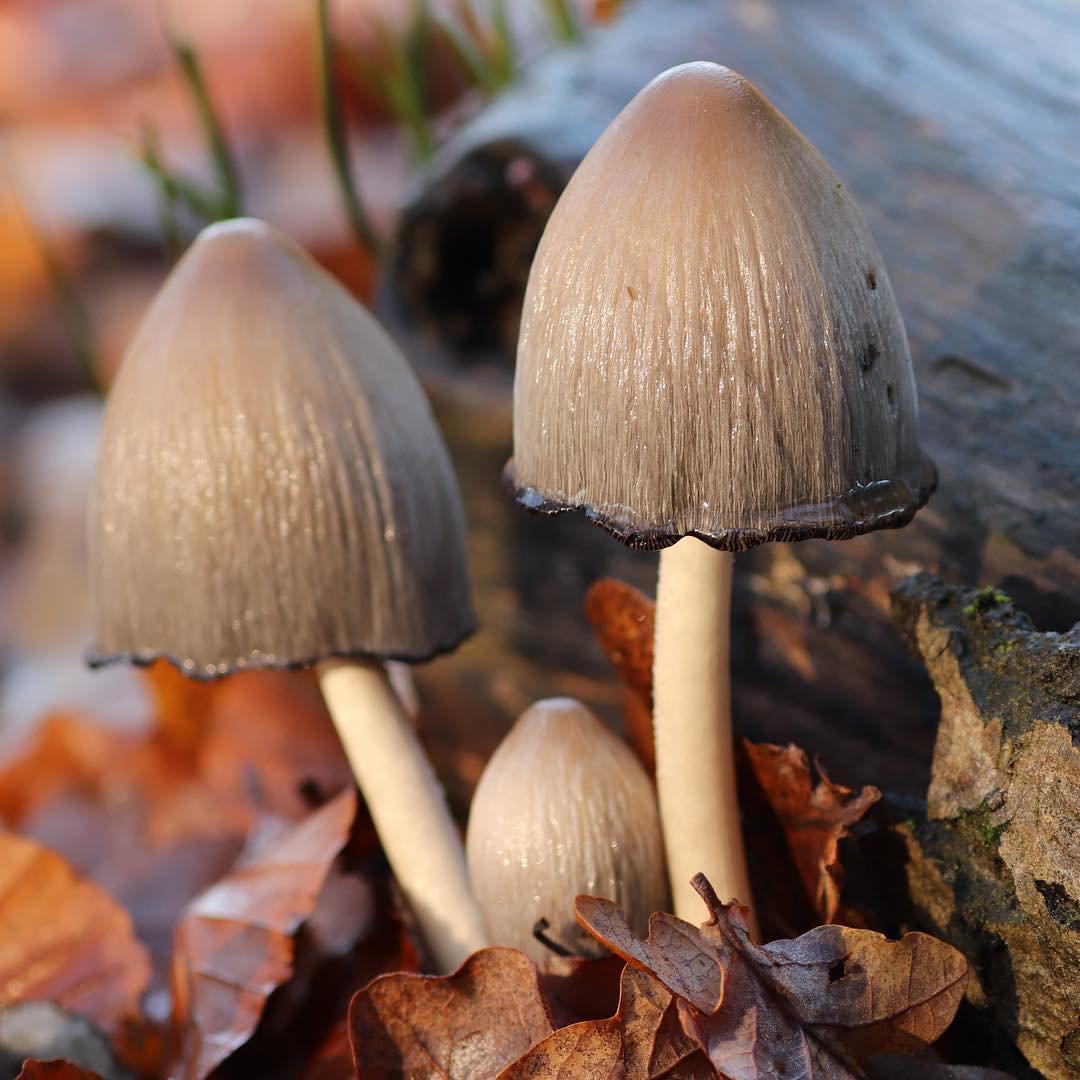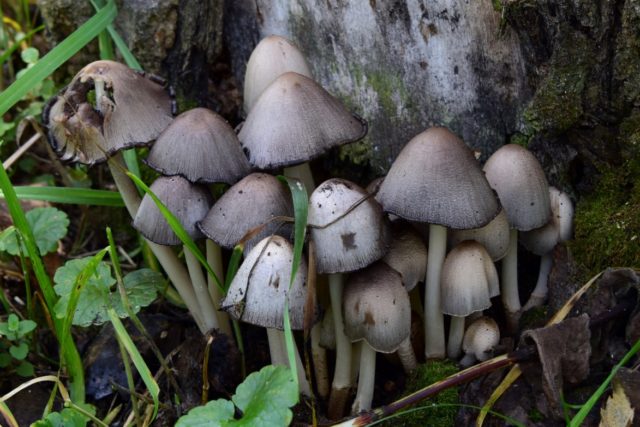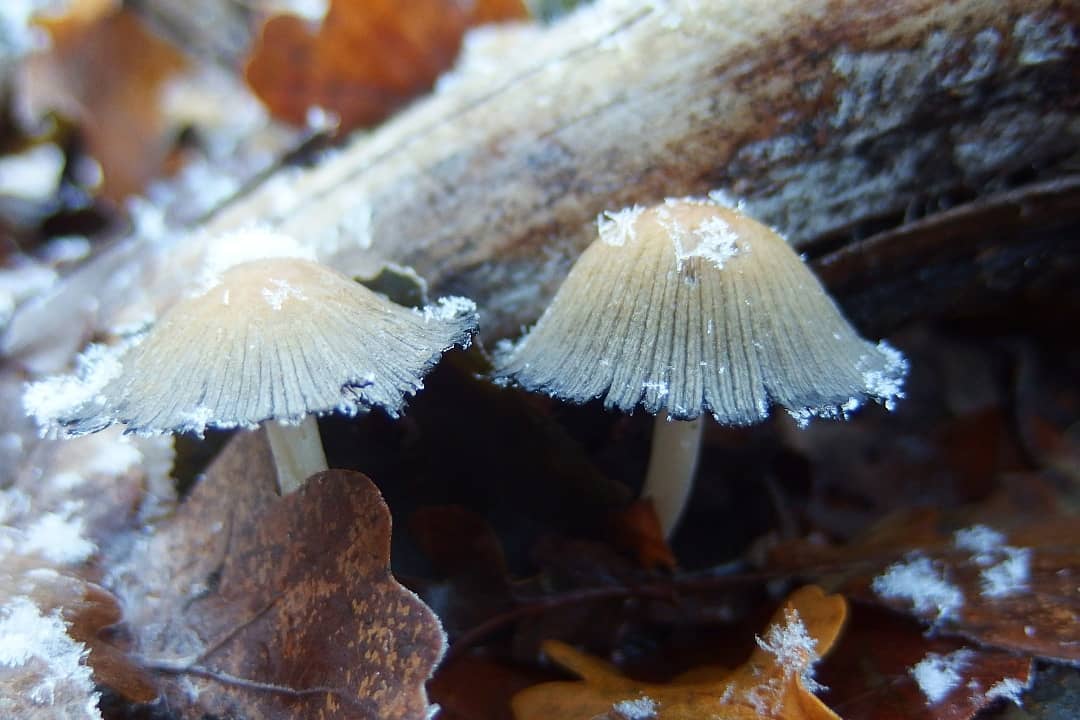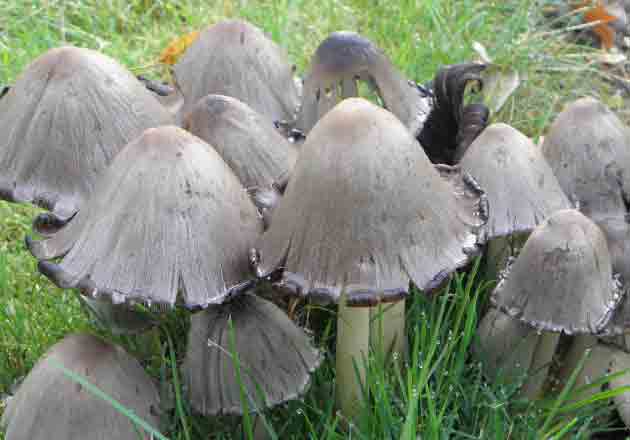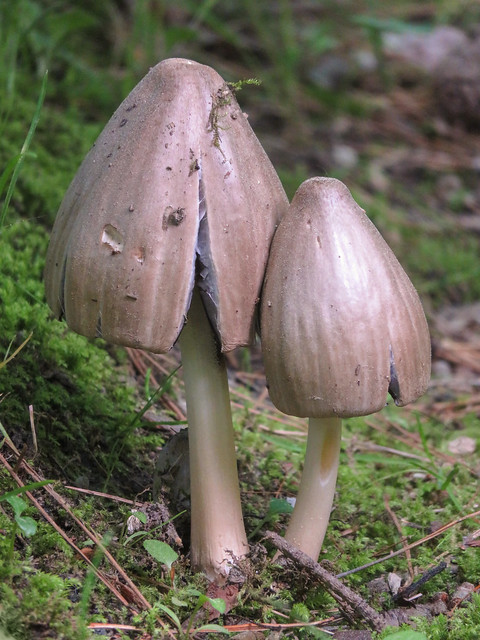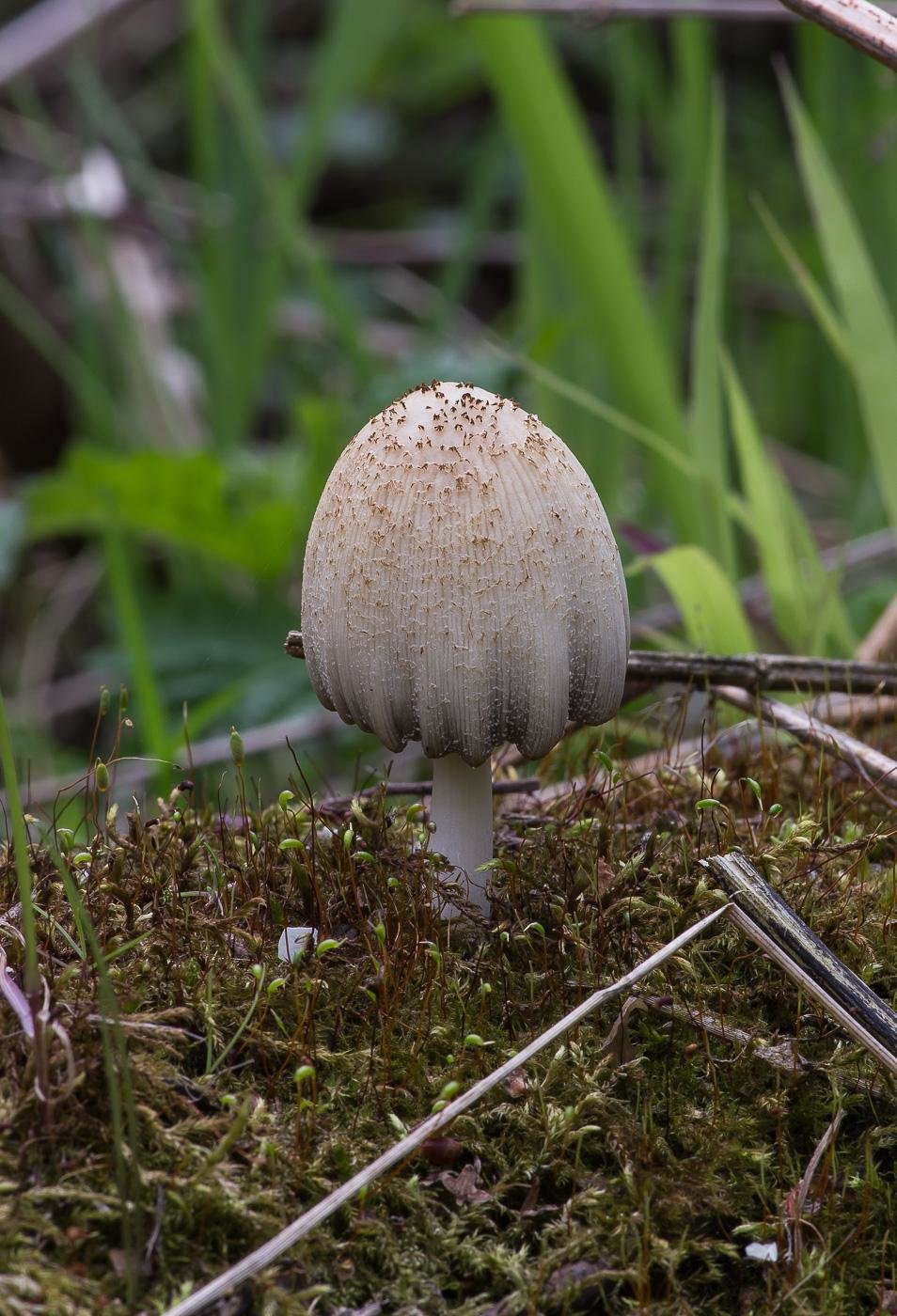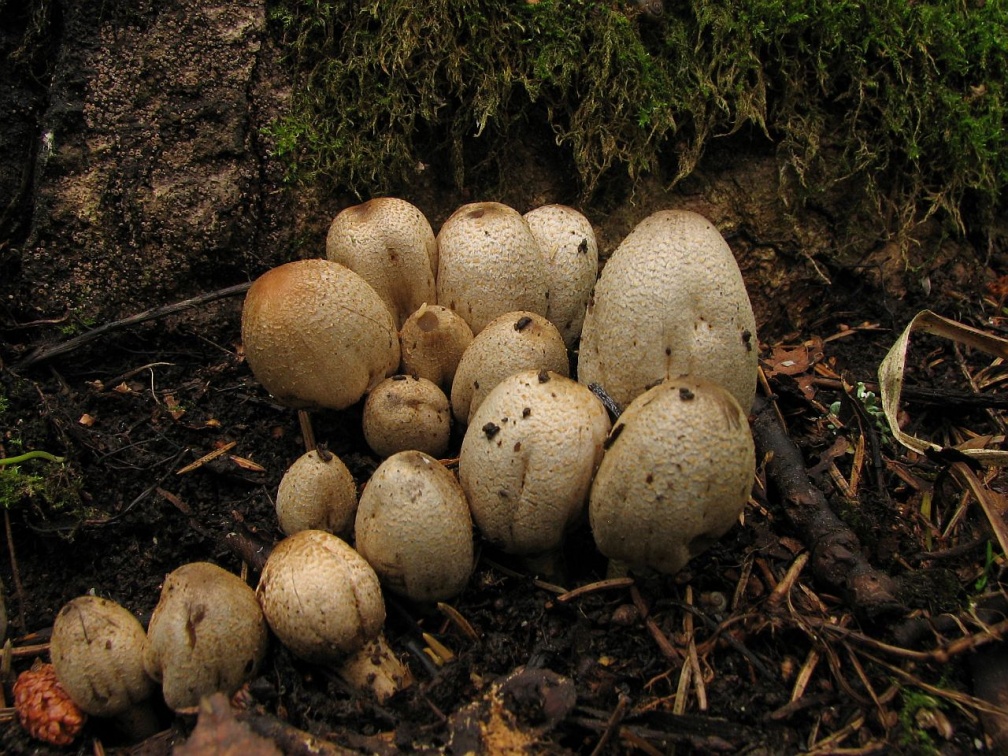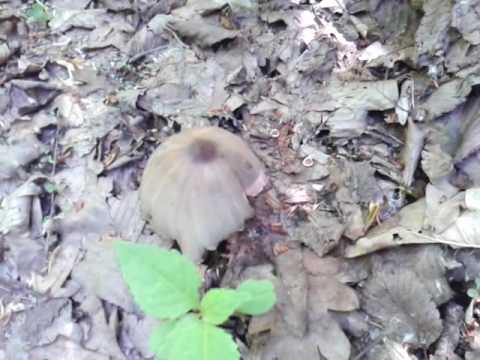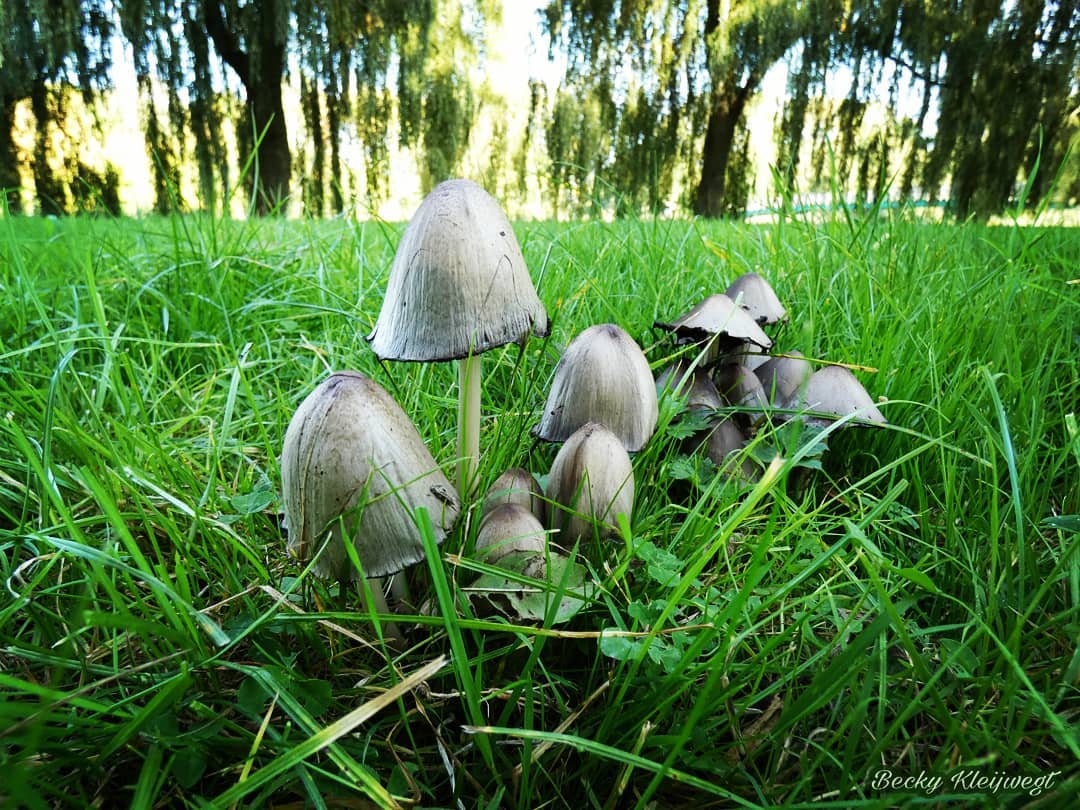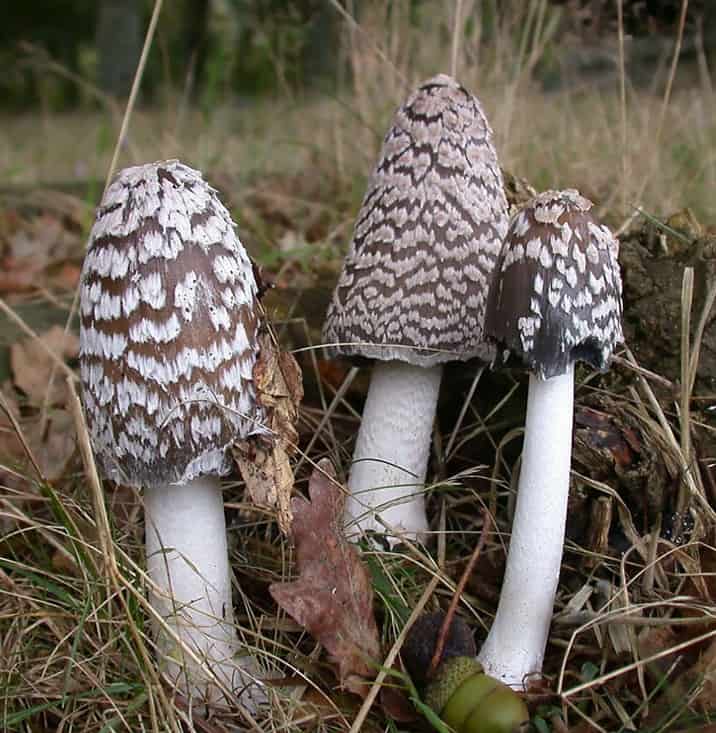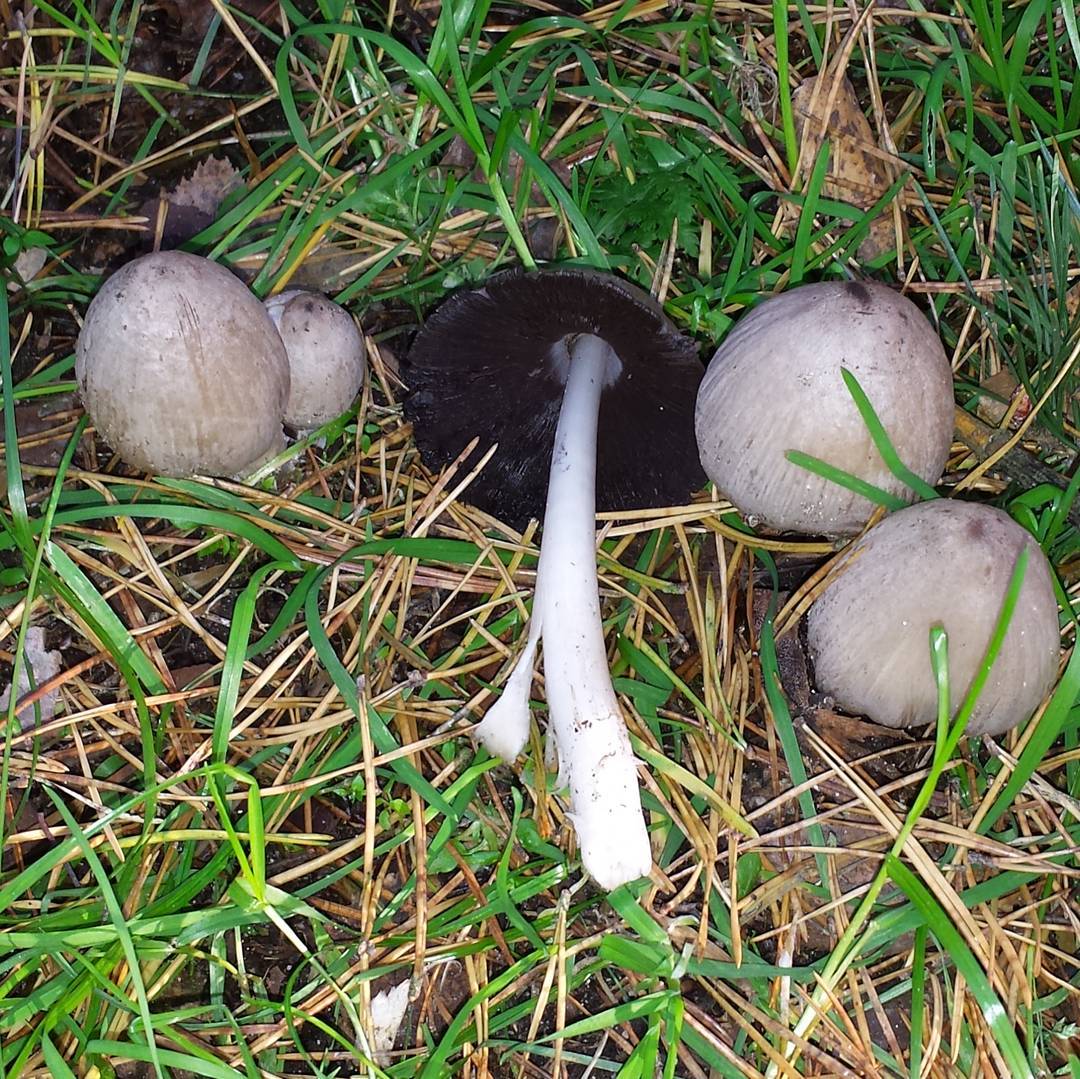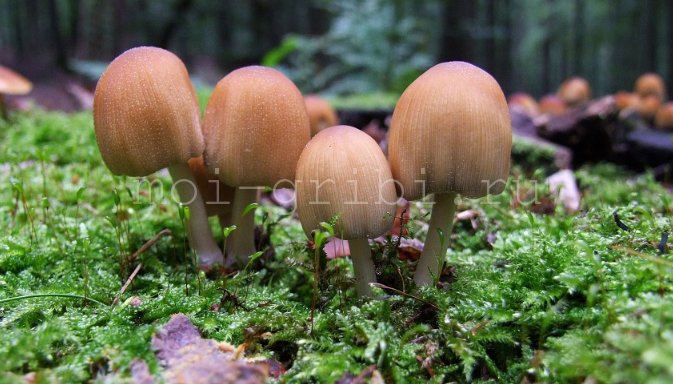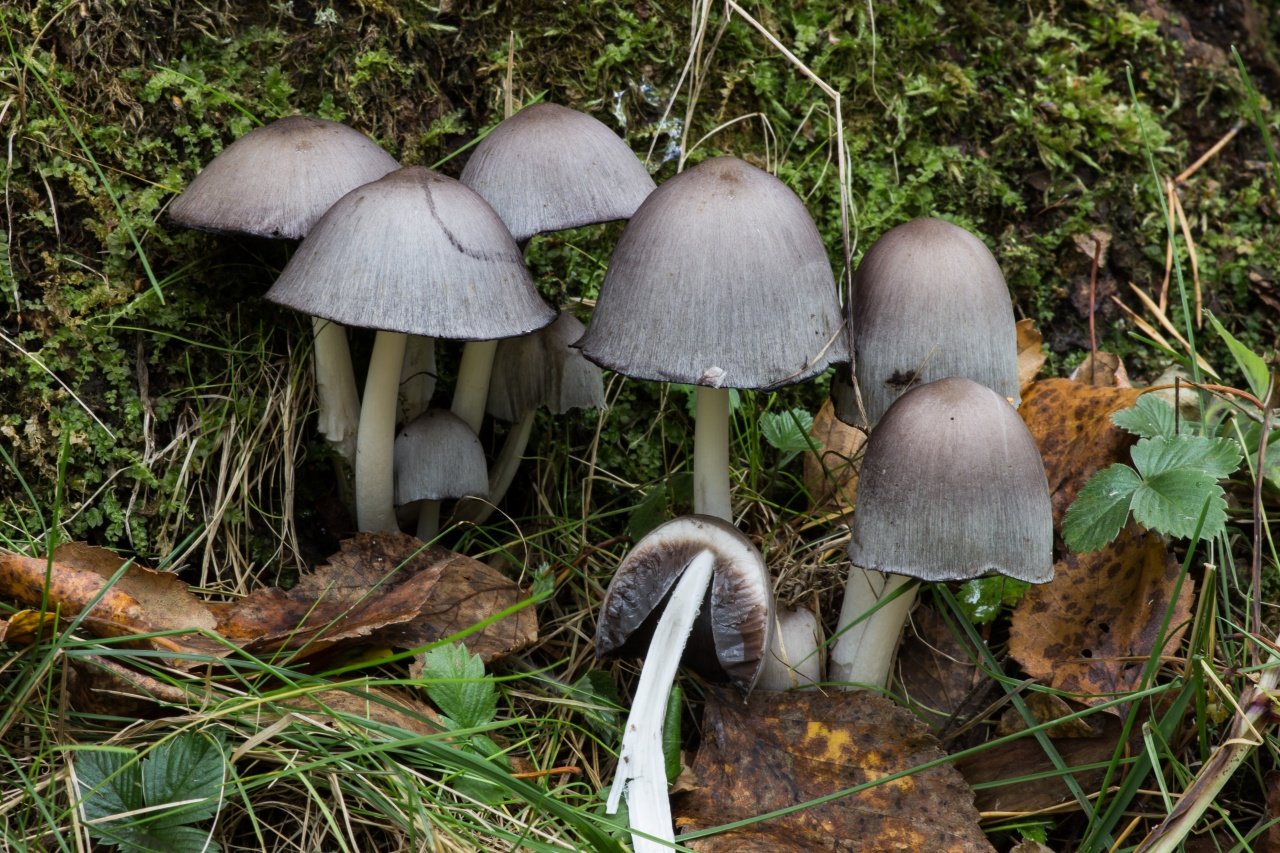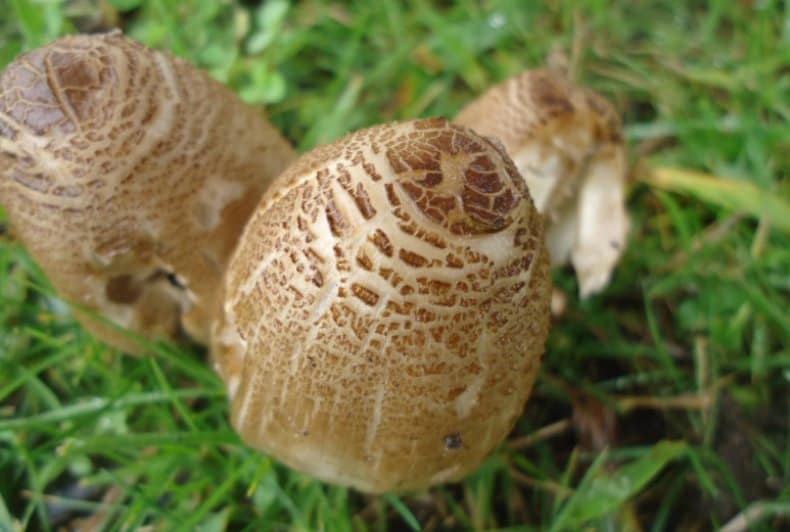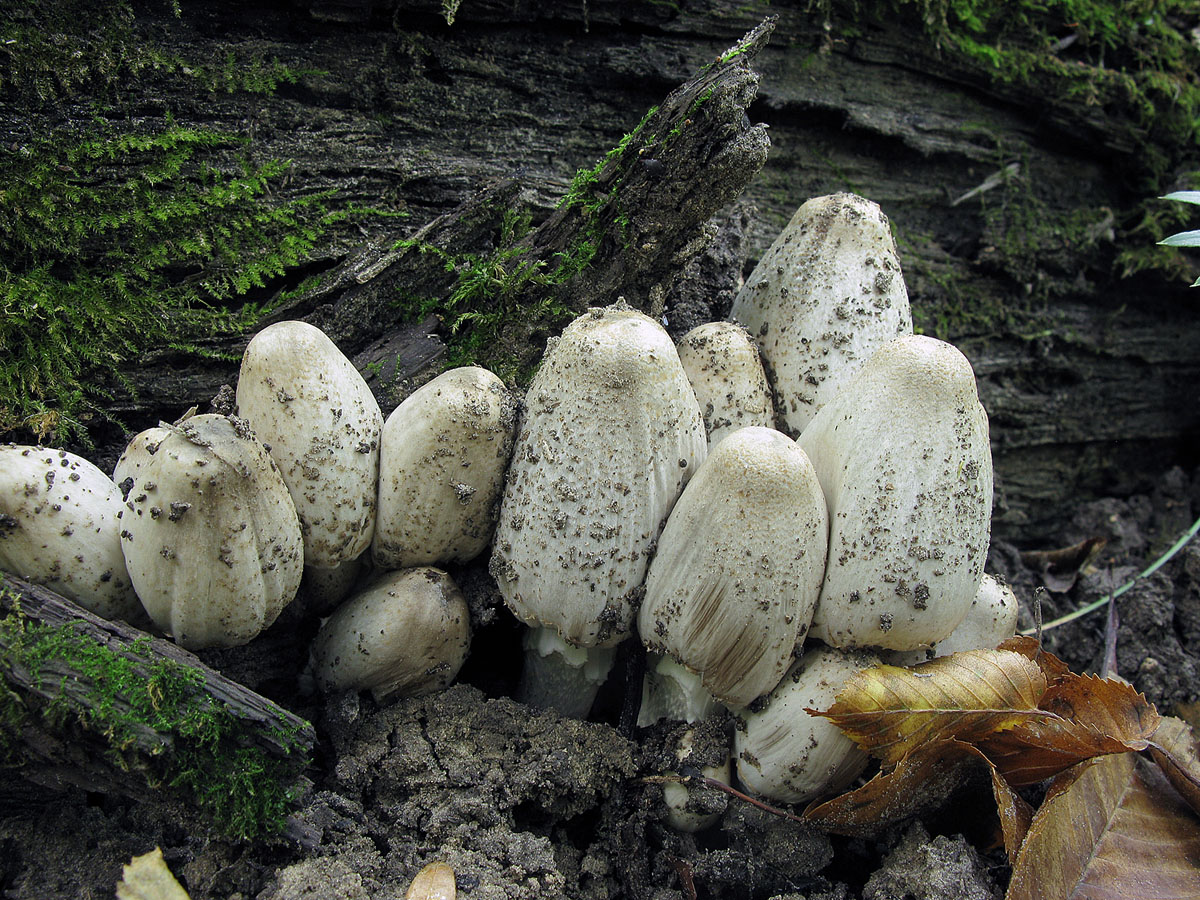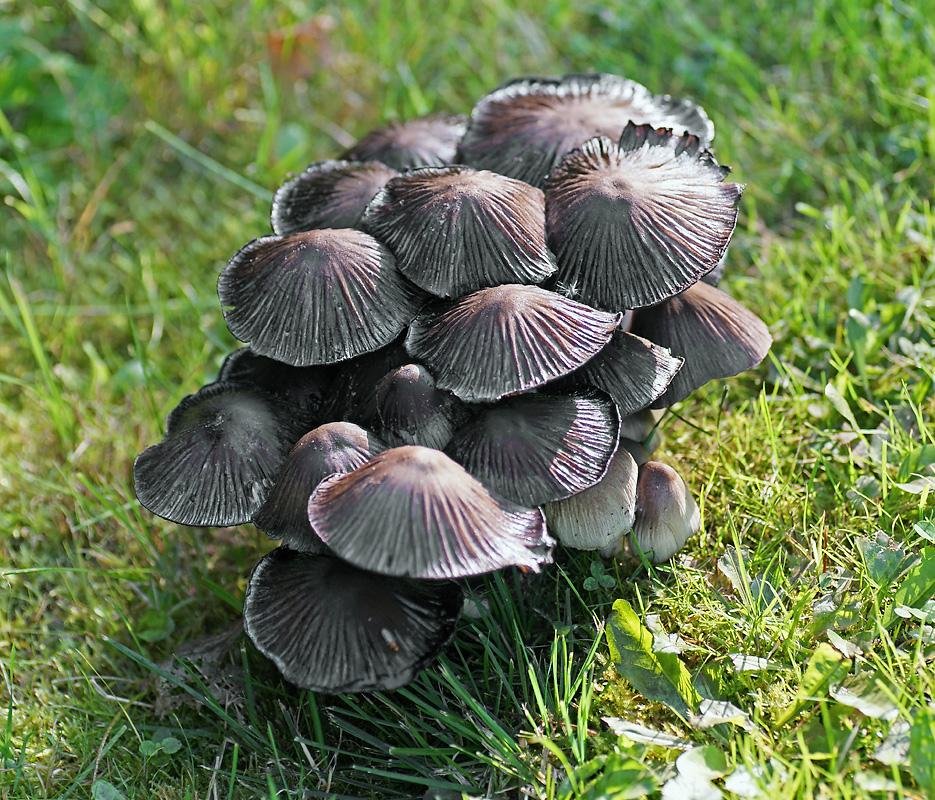Useful properties of ink dung
Gray dung beetle is an anti-alcoholic mushroom. If, after eating this mushroom, you drink alcohol, then the body is poisoned. Dung beetles cause poisoning in people under the influence of alcohol, but for non-drinkers they are completely harmless.
Symptoms include nausea and rampant vomiting. These symptoms pass quickly, but the body develops a persistent aversion to the smell and taste of alcohol.
Thanks to this, the mushroom began to be used as an anti-alcohol agent. In the 50s, a cure for drunkenness was made from gray dung beetle, which had a trouble-free effect. But poisoning with this mushroom is impossible with all the desire, that is, it is safe. Analyzes were carried out, which showed that ink dung beetles do not cause allergic reactions in the body.

In the old days, ink was made from the liquid that forms from the mushroom. This ink was used to sign especially important documents. The authenticity of the signature was evidenced by the presence of mushroom spores on it.
To make ink, the mushrooms were put in a basin, in which the autolysis process took place.
The resulting liquid was filtered by adding glue and clove oil, which served as a flavoring agent. With the help of this special ink, important documents and bills of exchange were protected. The defense consisted in the fact that when the ink dried, a peculiar pattern was obtained, which was examined under a microscope, and then fixed by hand.

Close species
A close species of ink dung beetle is shimmering dung beetle. This mushroom has a yellow-rusty or rusty color. The hat is covered with shiny scales, which is why the mushroom got its name "shimmering".
Flickering dung beetles grow in large groups. They are found in pastures, forests and vegetable gardens. They can be seen from June to November next to tree stumps. Shimmering dung is a little-known fungus. They can be stewed, boiled and fried.

Description of folded dung
In youth, the cap is yellowish, with age it opens. The flesh of the cap is thin, and the plates protrude, due to which the mushroom resembles a half-open umbrella. Most often, the caps never fully open, remaining half-open. In young specimens, the color is yellowish, while in older specimens it becomes lighter. The center is darker. The surface of the cap is folded. The diameter of the cap does not exceed 1.5-3 centimeters.
The plates are rare, they grow to the collarium (a kind of collar). With age, the plates become darker. But unlike other representatives of the genus, the folded dung beetle does not autolysis, that is, its plates do not turn into "ink". Black spore powder.

The leg of the folded dung beetle is thin, its length is 5-10 centimeters, while it is very thin - no more than 1-2 millimeters wide. Her color is white. The ring is not available. The leg is very fragile, most often after 10-12 hours, after the dung beetle is on the surface, its leg breaks and it falls.
Distribution of folded dung beetles
These mushrooms grow everywhere, they are found in meadows and along roads. Folded dung beetles bear fruit from May to October. Due to the fact that these mushrooms have a very short life cycle, they are hardly noticeable.

Similar species
Young folded dung beetle can be confused with golden bolbitius, but the difference becomes noticeable after a few hours.
In addition, there are several representatives of the genus that have an external resemblance to folded dung beetles.

Other mushrooms of the genus
Flickering dung is a conditionally edible mushroom. The shape of its cap is at first ovoid, and then it becomes bell-shaped, it almost never fully unfolds. Its diameter does not exceed 4 centimeters. The color of the cap is yellow-brown.The surface is grooved from the plates. The mushroom was called shimmering because its cap is strewn with a large number of shiny scales that can be washed off by rain. The stem is long and relatively thick, dense, white, without a ring.
Dung beetles grow, shimmering on rotting trees. Most often found in large clusters. Fruiting time is spring-autumn.

The hairy dung is an inedible mushroom. The shape of the cap at a young age is fusiform-elliptical, during the day it opens and becomes bell-shaped, and over time it becomes almost flat. The hat is no more than 1-2 centimeters in diameter. The surface of the cap is covered with the remains of a bedspread, between which an olive-brown color is noticeable. The height of the leg reaches 8 centimeters, and the diameter does not exceed 0.5 centimeters. The leg is often curved. Its surface is white with light scales.
Hairy dung beetles bear fruit in summer and autumn. They grow in various places, on the decayed remains of deciduous trees. Sometimes they can settle on manured soil. Fruiting bodies develop very quickly.
Description of hairy dung
In a young mushroom, the shape of the cap is fusiform-elliptical, but after a day it opens and becomes bell-shaped, after a while it becomes almost flat with raised edges.
Even at the bell-shaped stage of the fungus, autolysis begins, that is, self-dissolution of the cap. Therefore, only the central part of the cap reaches the flat stage. The diameter of the spindle-shaped cap is small - 1-2 centimeters, while the height of the cap is 2-4 centimeters.
The surface of the cap is densely covered with small white flakes; this is the remnants of a common torn. The flakes are similar in appearance to the pile. An olive-brown surface is visible between the sparse flakes.
The flesh of the cap is fragile, very thin, rapidly decomposing. Plates, narrow, free, often spaced. In the first hours of the life of the fungus, the color of the plates is light gray, but then they turn black and turn into mucus. The color of the spore powder is violet-black.
The height of the leg is about 8 centimeters, while its diameter is 0.5 centimeters. Its shape is cylindrical, it is often curved. The surface of the leg is covered with light scales.
Places of distribution and fruiting time of fluffy dung beetles
Hairy dung beetles bear fruit in summer and autumn. They grow in a wide variety of places, while settling on the thoroughly rotten remains of deciduous trees. Sometimes these fungi can be seen on well-fertilized soil.
The fruiting bodies of fluffy dung beetles develop and dissolve very quickly. This mushroom can be recognized only in the first hours of its life, so there is no clarity about their distribution.
Similar species
The genus of dung beetles abounds in similar species. The short life span of these fungi and the blurring of their external data greatly complicates the analysis.
Other dung beetles
Snow-white dung is an inedible mushroom. The size of its cap does not exceed 3 centimeters in diameter. At first, the shape of the cap is ovoid, and then it becomes conical or almost flat. The skin of the cap is pure white with a thick mealy bloom. The leg is very thin and light.
These mushrooms grow on horse manure. You can find them among the wet grass. Snow-white dung beetles bear fruit from summer to autumn.
Gray or ink dung is a conditionally edible mushroom. Its cap varies from ovoid to bell-shaped. The surface of the cap is dotted with small scales. Its height reaches 7 centimeters with a width of no more than 5 centimeters. The leg is long, fibrous, white, without a ring.
Gray dung beetles grow in the grass, on fertilized soils and on stumps. Often found in large groups. Fruiting from spring to autumn. When gray dung beetles are consumed together with alcohol, slight poisoning occurs, since they contain substances that are incompatible with alcoholic beverages.
Growing a dung beetle at home
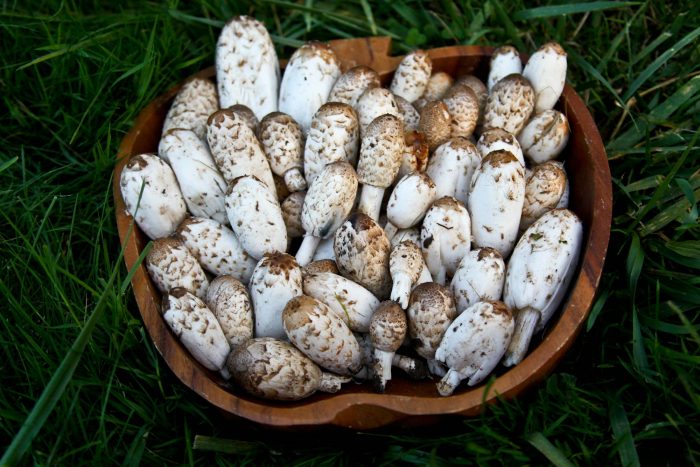
To grow white and gray dung beetle, prepare a bed in a shady place and fertilize it well. In the fall, the grown mushrooms are dug up together with the mycelium and planted in a prepared flower bed. Harvested next year.
Also, dung beetles are grown in beds and in boxes, like champignons.
Humus, tops, fallen leaves, manure with straw are used as a substrate. It is placed in wooden boxes or bags, and the mycelium is buried to a depth of 4-6 cm. Then it is poured several times with water, and sprinkled on top with a layer of earth up to 4 cm, and covered with cardboard or paper. The temperature regime in the room should not exceed 30 ° C.
The first crop is harvested in 2-3 weeks. The mycelium yields several times throughout the year.
Dung beetle White or Ink Coprinus Comatus
Common mushroom dung with a tasteless name
The only truly edible mushroom of its kind. It has excellent taste and is highly appreciated by true connoisseurs. Also known as Ink Mushroom.
Appearance
The hat is up to 15 cm high and up to 10 cm in diameter, initially spindle-shaped, then bell-shaped. Has a white or grayish color that darkens over time, and is covered with very characteristic wavy "goofs". A dark tubercle is often visible in the center of the cap.
The hymenophore is lamellar, the plates are wide, very frequent and free, initially white, then turning pink, darkening, and self-destructing along with the cap. Spore powder, black.
Approximately two days after hatching from the soil, the cap begins to leak a dark liquid, blackens and dries up until all turns into ink.
The leg is long, up to 35 cm high and up to 2 cm in diameter, hollow and cylindrical, centrally located. The leg is white, with a silky shade, and a slight thickening is visible at the base. A fragile white film ring remains on the top of the leg, which often falls off as the fungus grows, and if it does not have time to fall off, it darkens strongly from the "ink" dripping from above.
The pulp is soft and white, with a slight pleasant taste and smell.
Where and when it grows
White dung beetle is widespread throughout the northern temperate zone, found everywhere where there are loose, well-fertilized soils - in fields, orchards, vegetable gardens, in cities near garbage dumps and garbage dumps, on dung heaps and along roads. Can get caught in general in the most unexpected places. It is often found simultaneously in colossal quantities. Fruiting from May to late autumn.
Culinary application
Not all collectors are aware of the wonderful taste of this mushroom. Due to its small size, characteristic appearance and habit of growing anywhere, including in the most unappetizing places, many take it for a kind of toadstool. However, those who are familiar with the taste of White Dung bean appreciate it extraordinarily. According to experts, this mushroom is especially good fried with an omelet or sour cream. In France, Czech Republic and Finland Dung is generally revered as a delicacy.
When eating White Dung for food, you need to follow some rules:
- Fruiting bodies can be harvested only at a very young age, until the hymenophore plates begin to darken - about two days after the mushroom emerges from the ground. There is evidence of the successful use of Dungs in food and with an already fairly darkened hat - but you should not experiment with this once again.
- The decomposition process continues in already cut mushrooms, therefore, they must be started to process no later than 2 hours after collection. According to available information, the process of "inking" continues to occur even in frozen copies.
- It is recommended to boil the dung for 15 to 20 minutes before use. Those who like to cook this mushroom immediately in its raw form are desperately arguing with this, claiming that boiling only reduces the taste of the mushroom. Whether this is so or not, and who, in this case, is right, is still unknown.
- It is not recommended to mix dung beetles in the same dish with other mushrooms.
- It is believed that Dungs accumulate with particular zeal in themselves various toxic substances, so they are not advised to collect them along major highways, industrial enterprises and other sources of environmental problems.
- The evidence of the toxicity of this mushroom when interacting with alcohol has not been confirmed, so dung beetle does not help from drunkenness. However, this should not serve as a reason for abuse either.
For special purposes
This type of Navoznikov has long had one more use. The ink produced by the self-decomposition of the cap was used to draw up especially important government documents. It was believed that the inscriptions made with this ink could not be counterfeited, because if you look at the document through a microscope, then in the frozen ink, the spores of the fungus will be clearly distinguishable, making up a unique pattern that could be fixed, and it was impossible to deliberately repeat.
Evaluation of taste, medicinal properties, benefits and possible harm
Numerous studies have confirmed that this mushroom contains a special substance that has a destructive effect on the development of malignant tumors. There is evidence that treatment with coprinus helped to stop the development of aggressive sarcoma.
Having learned about all the beneficial properties of this amazing mushroom, you are guaranteed to stop being dismissive of it.
What are the useful functions of the coprinus mushrooms:
- contribute to the normalization of blood pressure;
- have a pronounced anti-inflammatory effect;
- due to the content of a natural antibiotic, they have a bactericidal effect;
- blocking the growth of tumor cells;
- activation of digestion;
- cleansing the body of radicals and toxins.
The mushroom has practically no contraindications to the use.
However, it should be used with caution by people with severe heart disease.
Ink mushroom, like most other dung beetles, is edible only while young. Today it is consumed boiled, fried and pickled. The hats can also be dried and used as spices, but until recently in Russia, these mushrooms were considered a toadstool.
Abroad, dung beetles are highly valued, and white dung beetles are even considered a delicacy.

IMPORTANT: You should not combine different types of dung beetles in one dish, since, although they are completely edible separately, in combination they can cause poisoning!
Common dung beetles are used after boiling. Then they do whatever they like - they can be fried, stewed, put in soup, and also pickled.
REFERENCE: common dung beetles can be frozen for future use, but only boiled. If the mushrooms are frozen fresh, after thawing, an autolysis reaction will occur in them, and only an unappetizing slurry will remain of them.
Proteins - 3.09 g (46%)
Fats - 0.4 g (5%)
Carbohydrates - 3, 26 g (49%)
· Calorie content - 16–20 kcal
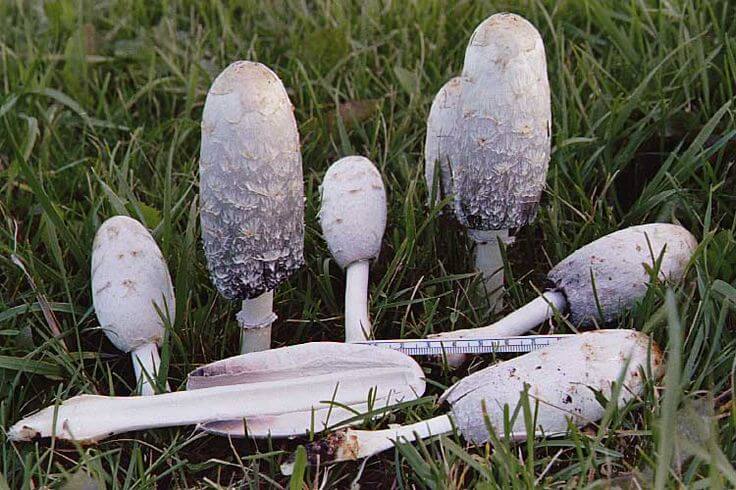
Up to 90% of the mass of the fruiting body is water.
TIP: Frying mushrooms produces a lot of water. It is better not to evaporate it, since the aroma is lost during the long heat treatment of the mushrooms, but to drain and add, for example, to the broth for the soup.
- promotes digestion, stimulates appetite;
- lowers blood pressure;
- antibiotic;
- lowers sugar levels;
- antineoplastic;
- hemostatic;
- bactericidal;
- anti-inflammatory;
- antioxidant.
Where grows
Loves fertilized soils rich in plant debris. Therefore, it can be found not only in the forest near rotting trees or immediately on them, but also in summer cottages, city parks, near residential buildings, on stumps. It can be found right in garden beds, garbage dumps, compost heaps. Distributed in many countries with temperate climates.
The growing places of mushrooms correspond to the name of their genus, since these representatives love well-manured soil, rich in humus, organic matter.
They are widespread in the temperate zone of the northern hemisphere.Especially often they can be found after warm rains in vegetable gardens, in fields, along roads, on garbage heaps, in low grass or forest litter. Common dung beetles grow most often one at a time or in small groups. The season starts in May and ends with the onset of frost in October.
Description
The beginning of the lysis of the cap
The cap is gray or grayish-brown, darker in the center, 5-10 cm in diameter, ovoid in a young mushroom, then broadly bell-shaped, with a cracking edge. The surface of the cap is with small, darkish scales.
The pulp is very thin, light, quickly darkening. The taste of the mushroom is sweetish, there is no characteristic smell.
free, wide, frequent. Their color in young mushrooms is white, then it becomes dark brown, in old ones - black.
The stem is central, white, slightly brownish at the base, smooth, hollow, 10-20 cm high, 1-2.5 cm in diameter, often strongly curved.
Remains of veils: the ring is white, quickly disappears; Volvo is missing.
Black spore powder, spores 9 × 6 microns, ellipsoidal, sometimes.
As they mature, the cap and plates of the fungus spread into a black liquid (autolysis).
Brief description, characteristics and class of the hallucinogenic mushroom
Amanita muscaria is a representative of the genus Amanita, the Amanita family. Latin name: Amanita strobiliformis. The mushroom has another name: Amanita cone-shaped.
The upper part of the cap is colored white or cream, on top of which there are numerous scaly growths of gray or brown color. Growths are the remnants of the blanket that served as a shell for the fly agaric when it was at a young age. The bedspread is of several types: general and private, the first covers the mushroom completely, while the other protects only the lower surface of the cap. However, when the fungus begins to grow, it breaks open and remains on the stem in the form of a ring and scales that cover the cap. Residual parts are necessary to determine the variety of the fruiting body.
The average diameter of the cap is 20 cm. Initially, it is semicircular, but eventually becomes flat. Smooth around the edges, without scales. The fly agaric hymenophore is presented in the form of numerous plates. This is the name of the lower part of the cap, on which spores are located, intended for further reproduction. When the cap is cut, a pleasant smell is felt.
The stem of the pineal fly agaric grows up to 20 cm, grows in diameter up to 2–3 cm. It is placed deep in the ground, the base has a bulbous thickening. There is a ring on the leg, which disappears with age.
A bit of history
This species was first discovered by local mushroom pickers living near Mount Amon. In 1956, the scientist V.G.Bogoraz became interested in him, he analyzed the effect of the pineal fly agaric on the human body.
Dung beetle gray
Gray dung beetle - a mushroom, belongs to the genus dung beetle of the family of dung beetles of the order lamellar. The cap reaches 3-7 cm, at first ovoid, then broadly bell-shaped, wrinkled, ashy or gray-brown in color, darker in the center, with small brown scales. The pulp is white, with a pleasant smell and taste, quickly darkens, spreading after ripening. The plates are frequent, white, black by maturity. The plates are loose, wide, white, then dark brown, then black. Stem is white, hollow, 10-20 cm long, 1-2 cm in diameter, brownish at the base with annular thickening.
In Russia, it is distributed in the European part, in the Caucasus, in Eastern Siberia and in the Far East. Grows in large groups of up to 100 mushrooms. It occurs from May to autumn on manured soil in forests, meadows, pastures, vegetable gardens, along forest roads, near dung heaps, near rotten stumps.
This is an edible mushroom, but it is worth remembering that gray dung beetle very quickly (within several hours) undergoes a decomposition process, as a result of which it turns into a liquid black mass. Its popular name is ink mushroom. It is edible only at a young age, until the plates darken, after preliminary boiling.It is used boiled, fried and pickled.
After eating dung beetle for quite a long time, drinking alcohol causes temporary poisoning, the symptoms of which soon disappear. The active substance of gray dung beetle - tetraethyl-thiuramide disulfide - oxidizes the alcohol introduced into the body. An analogue of this substance is synthesized and used under the name "Antabuse" in the treatment of alcohol addiction - to develop an aversion to alcohol. Thus, the mushroom is edible with the specified anti-alcoholic properties.
An interesting non-food use of gray dung beetle - in the old days of antiquity, it was used to make ink. To do this, mature mushrooms were put in a bowl and after the completion of the autolysis process, the resulting liquid was filtered and glue and flavoring (clove oil) were added
Such inks were used as an additive to the usual ones as a means of protecting documents of state importance and large bills of exchange. Protection is based on the fact that after drying, the spores of the fungus form a unique pattern, which is then examined under a magnifying glass and fixed by hand
The presence of fungal spores on the signature as a whole served as a guarantor of its authenticity.
False doubles
Gray dung beetle is easy to confuse with other members of this family. Some are edible and some are not. Fortunately, knowing the characteristics of these mushrooms makes it easy to tell them apart. Look at the photo.
| Mushroom name | External features and differences from the ink mushroom | Food use |
| Hay dung | Small size up to 8 cm high, gray-brown-yellow cap, brown plates, accrete | Inedible, hallucinogenic |
| Scattered dung beetle | A beige hat (no more than 2 cm in diameter) with grooves with small grains on it. Leg up to 5 cm high, gray | Inedible |
| Shimmering dung | The hat is yellow-brown with frequent grooves, covered with shiny scales with a shimmering sheen. Leg without mushroom ring | Edible, only hats are used for food |
| Folded dung | Hat yellow-brown, fawn plates | Inedible due to its very small size |
| Woodpecker dung (variegated or magpie) | In a young specimen, the cap is covered with white scales, which then darken and give the mushroom a characteristic magpie color. | Considered mildly toxic |
| Dung Romanesi | Most of all looks like an ink mushroom, but there are brown scales on the cap. | It is considered conditionally edible, but intoxication of the body is possible |
| Fluffy dungweed (hairy-footed, hairy-footed) | The hat is fluffy, covered with scales that look like villi, between them an olive-brown color is noticeable | Inedible |
| Dung beetle white-inedible | Hat diameter 2-3 cm | Inedible, but edible if cut as soon as it rose from the ground |
The common dung beetle has no false counterparts. It is possible to mention only a few poisonous mushrooms that have some similarity with him, and even then very distant (see photo).
| Name | Inhabits | Hat | Leg | Pulp |
| Home dung
(young mushrooms are not poisonous) |
Dead trees, fertile soil | In young mushrooms - pale yellow, then yellowish-brown, scaly. | Long, white, widened at the base | White |
| Paneolus (dung beetle) bell-shaped
Poisonous |
Grows in groups on rich soils, dung heaps. | Greenish gray, dark in wet weather. There is a tubercle at the top. The edges are uneven, with white teeth. The plates are frequent, adherent, gray or blackening. | Long, thin, gray. | Pale gray |
| Paneolus (dung beetle) moth
Poisonous |
Grows in groups on old manure. | Dark brown or brown-gray, brightens in older specimens. The plates are rare, adherent, speckled black color.
Spores are black. |
Long, thin, brittle, gray or dark brown. | The pulp is odorless, creamy or brown. |
| Paneolus odorous
Poisonous |
Grows in large groups in grass, on rich soil. | Reddish brown, smooth or hemispherical. The plates are rare, creamy.
Spores are dark brown. |
Straight, red-brown, light. | The pulp is dense, brown, with a pleasant smell. |
History of the genus Coprinus
Caprinus, or Koprinus (Latin Coprinus) is a genus of mushrooms belonging to the mushroom or agaric family (Agaricaceae).
The history of this kind resembles the history of the old ones. aristocratic families. "My family was once noble, but now dilapidated ..." - this can be said about the genus of dung beetles. Rather, not as dilapidated as noticeably thinner.
At the end of the twentieth century, it included about five dozen species of mushrooms. But after the geneticists intervened, some of the fungi were excluded from the Coprinus genus and redistributed into the Coprinellus, Coprinopsis and Parasola genera.
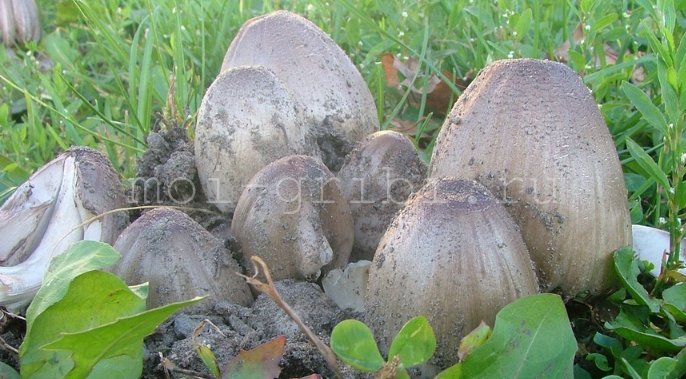
This process has not yet been completed. Therefore, it is difficult to name the exact number of fungi belonging to the genus Coprinus. Russian and British Wikipedia, and now, as they say, are confused in the testimony. According to the first version, it includes fourteen types of mushrooms, according to the second - eighteen.
Only one thing can be said with certainty - the world of mushrooms is complex, mysterious and has not yet been fully explored.
This article will focus on dung beetles, which are definitely assigned to the genus Coprinus.

